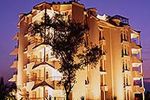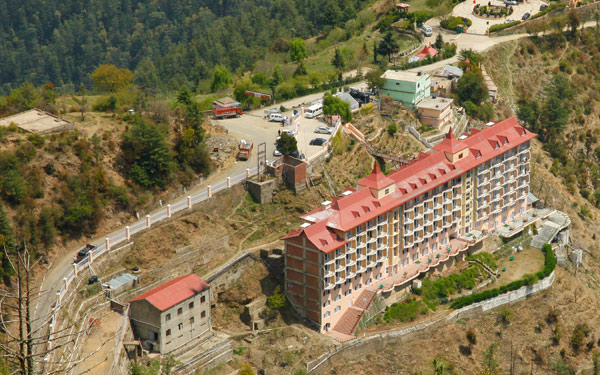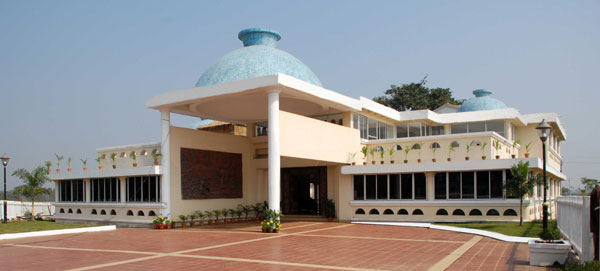DISTANCE - 375 KM From Allahabad, 250 KM From Varanasi, 97 KM From Patna
CONNECTION
By Air: Patna is the nearest airport, situated just 97 km from Bodhgaya. Regular flights connect Patna with major Indian cities including Delhi and Mumbai. Buses and taxis are easily available from Patna to reach Bodhgaya.
By Rail: The nearest and most convenient railhead is Gaya. Situated 16 km from Bodhgaya, the city is well connected to all the major Indian cities through regular trains. Gaya and Bodhgaya are conveniently connected through local buses.
By Road: Bodhgaya is connected to other cities in Bihar through well built roads. State road transport buses link the city with Gaya, which is further connected to all the cities across Bihar.
ABOUT BODHGAYA
Bodhgaya is which place where Prince Gautama attained enlightenment under the sacred Asvatta tree (Bodhi tree) and became known as Lord Budha. This is one of the four most sacred pilgrimage places for the Buddhists. The other three important places are his place of birth at Lumbini, Nepal; the site of his first lecture at Sarnath, near Varanasi; and the place where he left his body at Kushinagar, near Gorakhpur. Buddhists from all over the world have built temples here in Bodh Gaya. The Dalai Lama often spends time here. Tibetan pilgrims come here for the winter from Dharamshala. Bodh Gaya is located about 13 km from Gaya, 450 km west of Calcutta, and 90 km south of Patna. Bodh Gaya is a place which should be visited or seen by a person of devotion and which would cause awareness of the nature of impermanence.
Siddhartha Gautama, the Buddha-to-be, had been dwelling on the banks of the Nairanjana River with five ascetic followers for six years practicing austerities. Realising that austerities could not lead to realisation he abandoned them. His five ascetic companions disgusted at his seeming failure, deserted him and left for Sarnath.
PLACES OF INTERESTS IN BODHGAYA
Animesh Lochan Chaitya : It is believed that the Buddha spent one week here looking towards the great Bodhi tree out of gratitude, without twinkling his eyes.
Dungeswari Caves : Dungeswari caves located twelve kilometers away from Bodh Gaya are mysterious. One of these caves houses a statute of Buddha representing him when he was leading a life of austerity. These caves with statues, stone carvings, paintings, and graphics of Lord Buddha and his life, tell us the story of the life of Buddha.
Bodhi Tree : Gautam Sidhartha had learnt the eternal knowledge of life and death under this tree. Though the actual tree is not alive, the sapling of the original tree brought from Sri Lanka is still here. In and around the 3rd century B.C Sanghamitta, the daughter of Emperor Asoka brought a branch of this Bodhi tree and planted it in Anuradhapura, Sri Lanka where it still grows today. The existing tree is more than 122 years old and quadrangular stone railings of two types representing two different style and material surround it.
Bodhi Sarovar : The pond where Gautam took bath before going in for meditation has great religious importance for Buddhists. Situated towards the west of Bodhi temple, it gives the feeling of nostalgia where you feel as if you are seeing the young prince going and coming for bath. While in Bodh Gaya the pond is worth visiting.
RELIGIOUS PLACES IN BODHGAYA
Great Buddha Statue : The eighty feet statue of Lord Buddha is a major attraction in Bodhgaya. The statue is in Dhyan Mudra, i.e. meditation posture on an inverted lotus. The statue is made of red granite and sandstone blocks. According to historical evidence, 12000 masons made the statue in time of seven years. Daijokyo Sect of Japan helped build this statue. The Dalai Lama consecrated the statue on November 18 1989.
Mahabodhi Temple : The tree under which Gautama Buddha had meditated and learnt the eternal knowledge is known as the Bodhi Tree. Later on Buddhist king Ashoka built a shrine at the spot, which subsequently developed into a temple. The contemporary world knows the temple as Mahabodhi temple. The temple is a remarkable manifestation of the architectural dexterity of our artisans and one cannot but help admiring the architectural skills the temple displays. This pyramid shaped temple has four towers adorning its four corners.
Chankaramana : As it is believed when Gautam learned the eternal knowledge, he was in dilemma whether to disclose it to the world or not, and in this dilemma he started walking. It is believed that wherever Buddha put his feet lotuses sprang up. The spot is located in the north of the Bodhi Temple.
WHEN TO GO BODHGAYA
The ideal time to visit Bodhgaya is during the winters because during this period of time, the climate is quite pleasant and you can enjoy your tour to the fullest extent. The local people of Bodhgaya are hospitable and also quite helpful. This pilgrimage center occupies an important place in the itinerary of a tourist who is on his tour of east India.
WEATHER FORECAST
Summers (March to May) have maximum temperature in the range of 45 °C to 47 °C and minimum is about 27 °C. Tourists prefer to stay away from visiting the city during April and May months.
Monsoons (June to August) offer plenty of rain and are humid making the environment sultry. Still rains make the climate pleasant.
Winters are very pleasant during December to February with temperature ranging between 28°C to 4°C.
EVENTS AND FESTIVALS IN BODHGAYA
Festival of Nyingma Monlam Chenmo is organized in January-February month of the year for about three weeks. This festival is rejoiced for world peace and is usually attended by Dalai Lama (incarnation of Gautama Buddha) as well.
FOOD AND RESTURANTS IN BODHGAYA
You can find both vegetarian food and non-vegetarian food in Bodhgaya. Foods of different cuisines are also available such as Thai and Continental. Bodhgaya is a dry area; hence you will not find any liquor outlets. Some hotels may serve alcohol in their own restaurants. However, public drinking is neither appreciated and nor allowed.
Gautam, Fujia Green, Gautam Lassi Corner, Old Pole-Pole, Om Restaurant.
|








